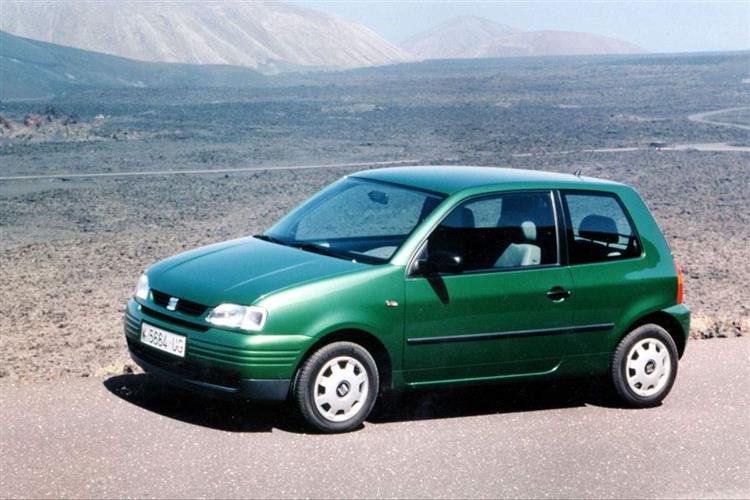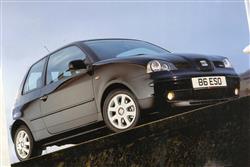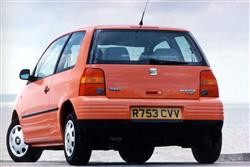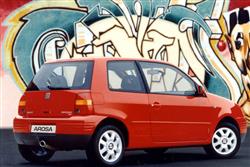AROSA IN SPANISH HAREM (some text hidden) --NONE--
BY ANDY ENRIGHT
Introductionword count: 90
Nothing seems to split motorists opinions more than the desirability of city cars. You either love them or hate them, and there seems to be no middle ground. SEAT's offering in this sector, the Arosa, has been quietly carving out an enviable market share against offerings such as the Ford Ka, Fiat Seicento and its VW Group sister, the Volkswagen Lupo. Given that these cars see a lot of punishing city driving and are obviously built down to a budget, does a used Arosa hold any allure? Find out here.
Modelsword count: 13
Models Covered: 3dr hatch [1.0, 1.4, petrol, 1.7 diesel. base, S, Sport, SDi]
Historyword count: 269
When the Arosa was launched in September 1997, the British public was just coming round to the idea of super compact city cars. The Fiat Cinquecento had paved the way and the Ford Ka was, after initial public shock at its styling, beginning to sell in volume. In many ways, SEAT were not entering this sector completely afresh, as the sub-basic SEAT Marbella, based on Fiat's old Panda, had been their offering for years. The Marbella, however, did not fit in with the Volkswagen Group's ideas of what a SEAT should represent, and most are now enjoying their retirement on the Costa del Crime. Upon launch, the Arosa range consisted of the 1.0 manual, boasting a hardly terrifying 50bhp, and the 1.4 litre from which it is said experienced drivers could extract 60bhp. Shortly afterwards, in January 1998, the Arosa 1.7 SDi was launched with a manual gearbox and a 60bhp output from its tiny turbodiesel unit. This was for some time Britain's most fuel-efficient car, returning 78.5mpg on the official EC combined test cycle. March 1999 saw the arrival of S model designations for the 1.0, 1.4 and 1.7 litre cars, and for a short while a further SE designation. All this changed in early 2000, when SEAT rationalised the range, adding a 16V Sport model with a 100bhp 1.4 litre engine. The range then consisted of 1.0, 1.0S.1.4 S Auto, 1.7 SDi and 1.4 16V Sport. In 2001 the range was facelifted with a restyled nose, tail and interior giving the Arosa more personality and better quality fittings to leapfrog the model ahead of the VW Lupo.
What You Getword count: 233
Surprising SEAT. Okay, so the tagline may have been purloined from another manufacturer, but it's a fact. Anybody expecting the Arosa to be little more than a motorised Anderson shelter would be in for a vast shock. The interior quality is deeply impressive. Whereas radio telescopes can pick up faint echoes of Fiat Seicento doors that were slammed three years ago, shut the door on an Arosa, and there's a reassuring thunk, Like an Audi in fact. All models come fitted with power steering, making one wonder how we ever managed without it in days gone by. There's also an adjustable steering wheel, driver's airbag, face-off stereo and VW's comprehensive 12-year bodyshell warranty. There's also the three year unlimited mileage warranty to factor into the equation. There is just about enough space for four adults inside, but don't expect to be able to carry their luggage with any great success. Nervous passengers are best sat in the front, as the rear seats can get worryingly close to traffic if it chooses to tailgate. The S variants received electric front windows, better quality upholstery, central locking and body coloured bumpers. If you want to make a statement, a Neon Yellow 1.4 16V Sport is the model to plump for. This came with 14-inch alloy wheels, front spotlights, lowered suspension, a lairy exhaust, sports seats, dual airbags, a leather rimmed steering wheel and blue instrumentation.
To see the full road test text contact us on 0330 0020 227
Pictures (high res disabled)


|

|

|
Scoring (subset of scores)
Category: Small Runabouts
| Performance | |
| Handling | |
| Comfort | |
| Space | |
| Styling, Build, Value, Equipment, Depreciation, Handling, Insurance and Total scores are available with our full data feed. | |



